Case Studies

Amazon Purchase Experience – UX Deep Dive
Case Study Overview
Amazon’s shopping experience feels effortless, but behind the scenes, powerful psychological principles shape every interaction. This case study explores how social proof, status quo bias, and the endowment effect subtly guide user behavior—encouraging subscriptions, repeat purchases, and faster checkouts. By labeling the "most common" delivery option, Amazon uses social proof to nudge users toward pre-selected choices. Subscription discounts (5-15% off) tap into status quo bias, making auto-deliveries feel like the smarter default. Meanwhile, the endowment effect reduces hesitation by making products feel like they’re already yours before you even buy them. These strategies enhance convenience but also raise concerns about overconsumption, excessive packaging, and unconscious spending. This case study examines how Amazon’s UX balances frictionless shopping with subtle persuasion—and what it means for ethical design.
Anchoring
Ever wonder why a deal feels too good to pass up? That’s anchoring at work. Here, Amazon doesn’t just show you the current price (₹426.55)—it makes sure you see what you could have paid (₹999). That big, bold 57% off tag? It’s there to make the discount feel massive, even if you never intended to pay full price. But the real kicker? The ₹50.18/100g breakdown. Instead of thinking about spending ₹426, your brain latches onto the smaller number, making the purchase feel like an even better deal. It’s a psychological nudge, and it works like a charm.
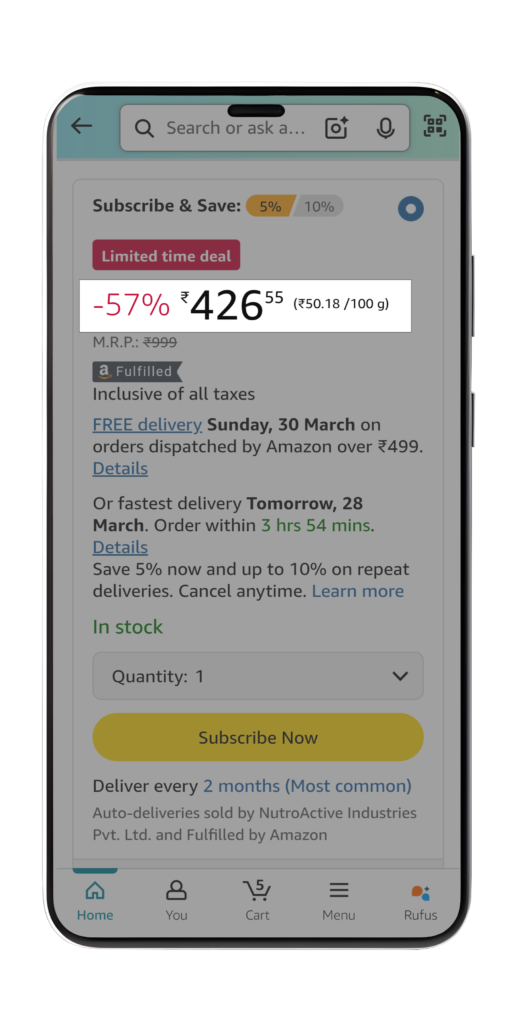
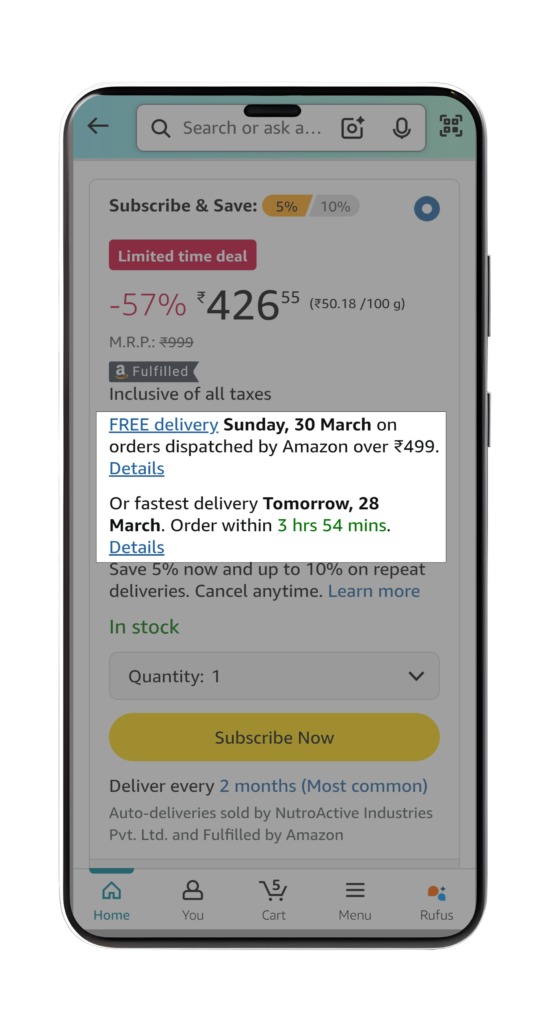
Endowment Law
Ever notice how Amazon makes you feel like your order is already yours before you even buy it? That’s the endowment effect at work. By emphasizing free delivery—"Get it by Sunday, March 30, on orders over ₹499"—Amazon nudges you to spend more. But the real trick? The urgency. Instead of just stating delivery times, Amazon adds a countdown: "Order within 3 hours 54 minutes to get it by tomorrow, March 28." This makes the item feel within reach, increasing your likelihood of purchasing. Framing shipping this way taps into your psychology, reinforcing ownership and making it harder to resist hitting "Buy Now." Now that you’ve spotted it, you’ll see this tactic everywhere.
Fitts Law
Ever wonder why you end up choosing a subscription instead of a one-time purchase? That’s Fitts’s Law in action. The bigger and easier a target is to reach, the more likely we are to interact with it. Here, Amazon dedicates one-third of the screen to the subscription option, while the one-time purchase is just a tiny radio button. This subtle design choice makes subscribing feel like the default, nudging users toward it. Most people, without much thought, will instinctively go for the more prominent option. By leveraging size and placement, Amazon increases conversions effortlessly. Now that you’ve spotted this trick, you’ll start noticing it everywhere in UX design.
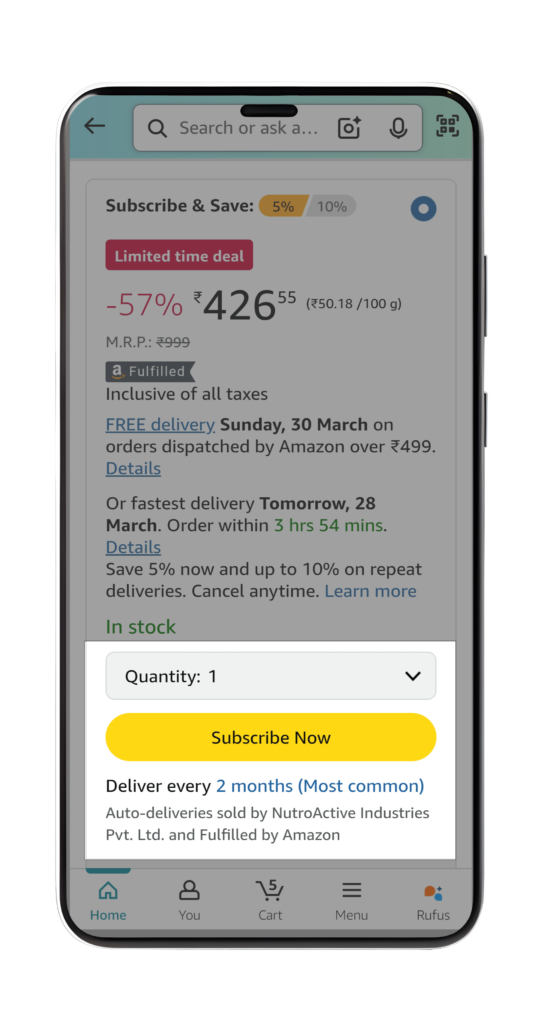
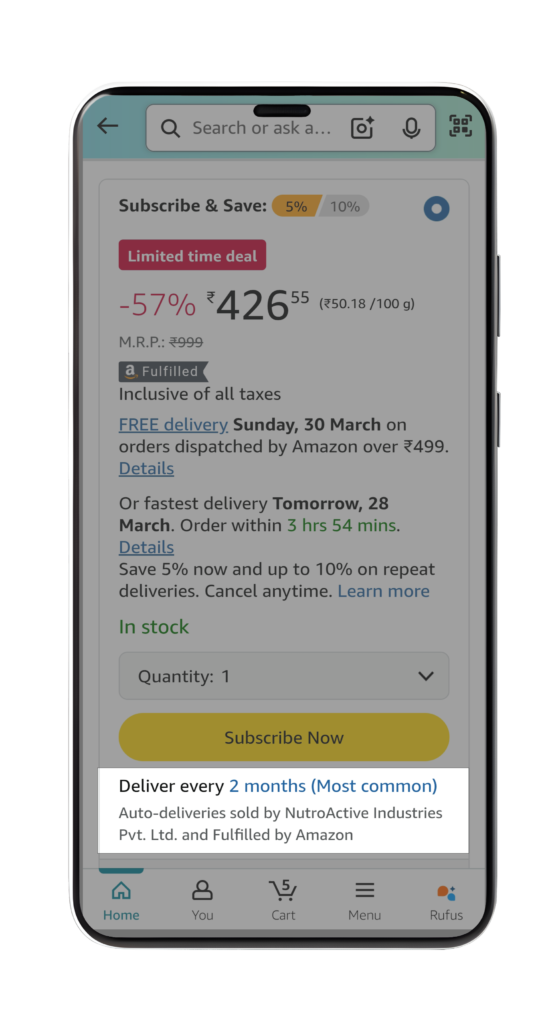
Social Proof to Influence Choices
People tend to follow the crowd, especially when uncertain—this is social proof in action. Amazon subtly applies this by labeling the "2-month delivery" option as the "most common" choice. This small nudge makes users more likely to select it, assuming it's the best or most popular decision. Similarly, Amazon’s subscription discounts (5-15% off) leverage status quo bias to make repeat purchases feel like the smarter choice. By positioning subscriptions as a default, users are encouraged to stick with them rather than opt for a one-time purchase. These tactics aren’t just about discounts—they’re psychological strategies that guide user decisions without them even realizing it.
Status Quo Bias
People tend to stick with what they know unless given a strong reason to change—this is status quo bias in action. Amazon takes advantage of this by offering a 5-15% discount on subscriptions, making it more appealing than a one-time purchase. By positioning subscriptions as the smarter, more cost-effective choice, Amazon subtly nudges users toward long-term commitments. These psychological tactics aren’t just about saving money—they’re about shaping customer behavior in ways you might not even notice.
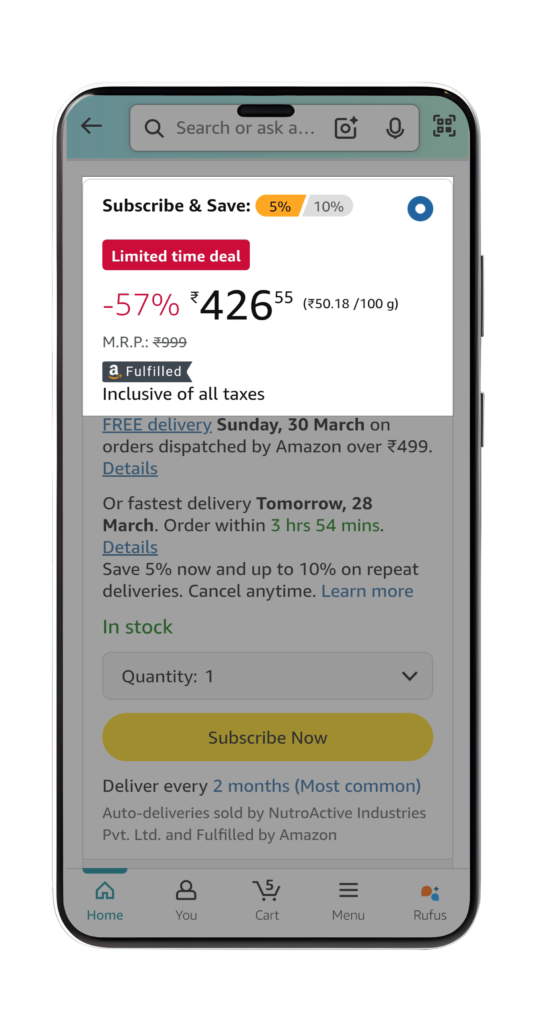
Conclusion
Amazon’s shopping experience isn’t just smooth—it’s strategically designed to influence your decisions. Every detail, from the way discounts are displayed to how subscriptions are framed, is rooted in behavioral psychology. By labeling a delivery option as "most common," Amazon taps into social proof, making you more likely to pick it. Subscription discounts subtly nudge you toward repeat purchases, playing on status quo bias—because sticking with what’s easy feels right. And before you even hit "Buy Now," the endowment effect makes you feel like the product is already yours, reducing hesitation. These tactics make shopping effortless, but they also come with a downside—overconsumption, excess packaging, and mindless spending. While Amazon’s approach is a masterclass in UX, it raises an important question: Are we making choices, or are they being made for us? Great design isn’t just about guiding users—it’s about empowering them to make informed decisions.
